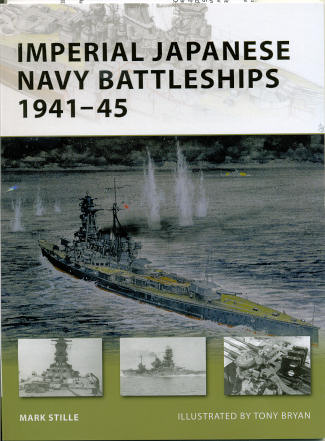 Like
Great Britain, Japan relied on the sea to provide for its people. Everything
from food to most strategic materials had to be transported over the oceans.
Once Japan opened up to Western ideas, they fully embraced the need to have a
strong navy and looked to the British (who had the strongest nautical force at
the time) to provide inspiration and guidance. Always willing to sell weapons,
the British were more than happy to assist and many of Japan's early ships were
British built or designed. Interestingly, Japan never had to go through the age
of sail as did other European and American powers, but went straight into the
age of steel and steam for its ships.
Like
Great Britain, Japan relied on the sea to provide for its people. Everything
from food to most strategic materials had to be transported over the oceans.
Once Japan opened up to Western ideas, they fully embraced the need to have a
strong navy and looked to the British (who had the strongest nautical force at
the time) to provide inspiration and guidance. Always willing to sell weapons,
the British were more than happy to assist and many of Japan's early ships were
British built or designed. Interestingly, Japan never had to go through the age
of sail as did other European and American powers, but went straight into the
age of steel and steam for its ships.
Knowing that they could not match their
strongest adversary (the United States), in terms of numbers, the Japanese set
out to be do what they could in terms of producing ships of superior quality.
Thus, their first dreadnaught battleships were based on the British 'Lion'
class, but upgraded to meet Japanese expectations. Up until actual combat in
WWII, it was supposed by all navies that war at sea would mean battleships and
to this extent, the Japanese wanted to have the best. And they generally did.
This book in the New Vanguard series
looks at the five major classes of Japanese battleships; the Kongo, Fuso, Ise,
Nagato and Yamato classes. Each class is provided a basic history of the ships
as well as the design and modifications made to them as time progressed. There
are a superb number of period photos of each type as well as cutaways and the
excellent artwork of Tony Bryan to help us visualize what these ships were like
in action.
It is fortunate for the US that the
Japanese missed several opportunities to put their battleships to good use as
the intervention of the Yamato at Guadalcanal, for instance, would have meant a
failed invasion and a change as to how the war would have progressed. However,
as we all know, the Japanese made little good use of these assets and for most
of the war, they saw little to no action. It wasn't until the aircraft was in
major ascendency that these ships were brought to battle and against air power
at the time, they were no match.
An excellent book on a most interesting
subject and one that I am positive you will find to be of interest. One that
will be pulled from the shelves time after time and one I can highly recommend
to you.
July 2008
For more on the complete line of Osprey books,
visit www.ospreypublishing.com. In the US, it is
Osprey Direct at 44-02 23rd St, Suite 219, Long Island City, NY 11101., where you can
get a catalogue of available books.
If you would like your product reviewed fairly and quickly, please contact
me or see other details in the Note to
Contributors.
 Like
Great Britain, Japan relied on the sea to provide for its people. Everything
from food to most strategic materials had to be transported over the oceans.
Once Japan opened up to Western ideas, they fully embraced the need to have a
strong navy and looked to the British (who had the strongest nautical force at
the time) to provide inspiration and guidance. Always willing to sell weapons,
the British were more than happy to assist and many of Japan's early ships were
British built or designed. Interestingly, Japan never had to go through the age
of sail as did other European and American powers, but went straight into the
age of steel and steam for its ships.
Like
Great Britain, Japan relied on the sea to provide for its people. Everything
from food to most strategic materials had to be transported over the oceans.
Once Japan opened up to Western ideas, they fully embraced the need to have a
strong navy and looked to the British (who had the strongest nautical force at
the time) to provide inspiration and guidance. Always willing to sell weapons,
the British were more than happy to assist and many of Japan's early ships were
British built or designed. Interestingly, Japan never had to go through the age
of sail as did other European and American powers, but went straight into the
age of steel and steam for its ships.